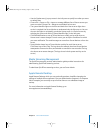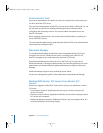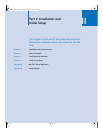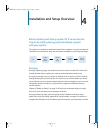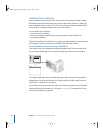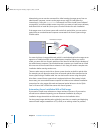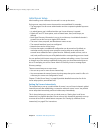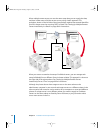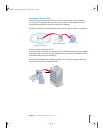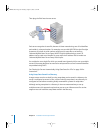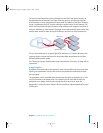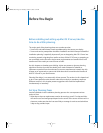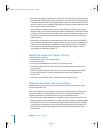
Chapter 4 Installation and Setup Overview 67
Initial Server Setup
After installing server software, the next task is to set up the server.
During server setup, basic server characteristics are established. For example:
• The language to use for server administration and the computer keyboard layout are
defined.
• An administrator user is defined and the user’s home directory is created.
• Default AFP and FTP share points, such as Shared Items, Users, and Groups, are
defined.
• Basic Open Directory information is set up. At a minimum, a local NetInfo domain is
created. You can also set up an Apple LDAP domain.
• The server’s host, computer, and Rendezvous names are set.
• The network interfaces (ports) are configured.
• Network time service can be set up.
• Services that require no additional configuration can be turned on. By default, to
maximize security, the only server processes running after server setup are the
essential ones needed for basic system function. Externally usable services, such as
mail, web, and file services, are off by default and the corresponding ports are closed.
You can perform initial server setup only once without reinstalling a server. If you need
to change any of the settings established during setup, you have alternative means to
do so. For example, you can use Server Admin or Directory Access to manage Open
Directory settings.
There are several ways to set up a server:
• You can set up one or more servers interactively.
• You can automate the setup of servers by using setup data you’ve saved in a file or in
a directory the servers are configured to access.
Chapter 7, “Initial Server Setup,” on page 89 provides detailed instructions for all the
server setup options, summarized next.
Setting Up Servers Interactively
The simplest way to set up a small number of servers is to use Server Assistant’s guided
interview process after establishing a connection with each server in turn. You provide
server setup data interactively, and then initiate setup immediately.
This is the technique you use to set up a local server, as “Setting Up a Local Server
Interactively” on page 96 describes. You can also use this interactive approach to set up
a remote server from an administrator computer. See “Setting Up a Remote Server
Interactively” on page 97 for instructions.
LL2343.Book Page 67 Thursday, August 14, 2003 5:12 PM



